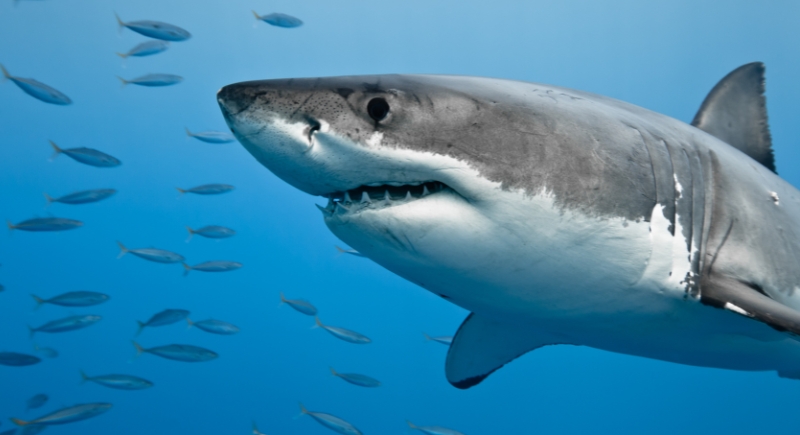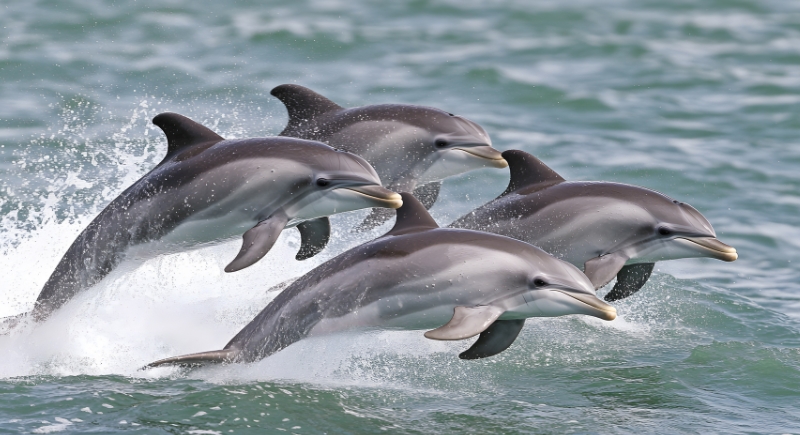The Real Reason Dolphins Have Been Known to Protect Humans From Sharks
Stories about dolphins move fast. Someone spots a shark, dolphins show up, and the moment quickly becomes something bigger than it was. Friends repeat it. Strangers add their own details. Before long, it turns into a tale of dolphins rushing in to save a person in danger. The scene sounds dramatic, but the real explanation is usually quieter and more ordinary. The clues sit in the small details most people skip, and those details offer a clearer sense of why dolphins sometimes appear when sharks are near.
Why People Read So Much Into Dolphin–Shark Encounters

Image via Getty Images/vladoskan
People often react strongly to these moments because dolphin behavior looks deliberate. Their movements seem coordinated, and their timing feels meaningful. When a shark passes through and dolphins appear at the same moment, it sets up a scene that feels heroic. Marine researchers point out that sharks and dolphins overlap constantly in the same waters and often follow similar prey, which places swimmers and surfers right inside a routine interaction between two species.
Sharks follow patterns of their own, and their presence alone rarely signals danger. Global incident databases show that millions of ocean visits happen each year with only a tiny fraction involving bites. Most of the time, people never notice a shark nearby. Sharks move according to food, water conditions, and visibility, and a lone swimmer usually falls outside their preferred prey. This matters because many popular stories assume a shark automatically intends to bite, which does not match what researchers see in real encounters.
Dolphin Behavior Works on Group Strategy
Dolphins, especially bottlenose populations, operate with strong pod coordination. They travel, feed, rest, and defend their groups through shared action. When a shark appears, pods may group as a safety mechanism. These maneuvers help adults protect calves and help the group maintain control of space. When a human happens to be nearby, this creates the impression that the pod intervened for the person. The behavior, however, aligns with what they already do to safeguard one another.
Pod defense can involve intimidating displays, fast directional changes, or sudden clustering. These movements occasionally force a shark to redirect. As a result, the person near the group appears shielded. Researchers studying interspecies interactions note that dolphins sometimes approach unfamiliar objects, including humans, out of curiosity. That curiosity can place them between a swimmer and a shark by coincidence rather than by intent. The timing looks deliberate even when the motivation comes from basic investigation or pod defense.
Intelligence In Misinterpretation

Image via Oksanavectorart/Oksana Latysheva
Dolphins have problem-solving skills and communicate through complex signals. Their intelligence makes it easy to misread their intentions because their behavior feels expressive and deliberate. When people witness dolphins circling or guiding movement, the pattern seems personal. Scientists reviewing recorded interactions highlight that these same patterns often appear during play, hunting, and navigation. The similarity in movement across multiple contexts makes interpretation tricky without clear evidence of purpose.
Why The Myth Persists
Dolphins carry a long cultural history tied to friendliness and cooperation. Ancient artwork spotlighted them as symbols of protection. Modern entertainment reinforced that image. When a human walks away from a close shark moment unharmed, and dolphins are present, the storyline practically writes itself. These stories speak to a shared desire for harmony with wildlife, even when the evidence behind the narrative remains thin.
The simplest explanation aligns with observed behavior. Dolphins respond to sharks to protect their pods or because both species occupy the same feeding grounds. Humans placed inside these interactions interpret the sequence through an emotional lens. The effect feels personal even when the cause sits firmly in biology, instinct, and group coordination.